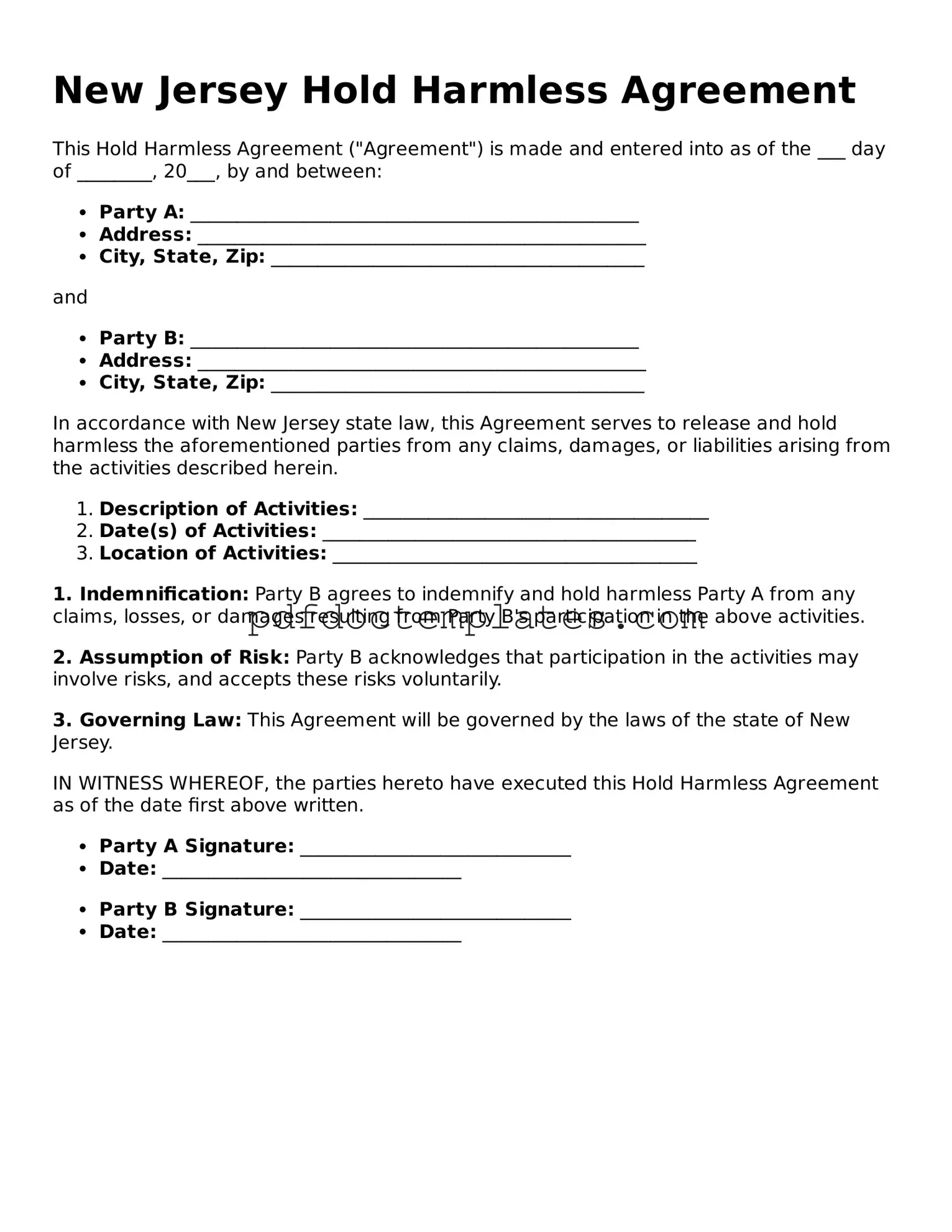New Jersey Hold Harmless Agreement
This Hold Harmless Agreement ("Agreement") is made and entered into as of the ___ day of ________, 20___, by and between:
- Party A: ________________________________________________
- Address: ________________________________________________
- City, State, Zip: ________________________________________
and
- Party B: ________________________________________________
- Address: ________________________________________________
- City, State, Zip: ________________________________________
In accordance with New Jersey state law, this Agreement serves to release and hold harmless the aforementioned parties from any claims, damages, or liabilities arising from the activities described herein.
- Description of Activities: _____________________________________
- Date(s) of Activities: ________________________________________
- Location of Activities: _______________________________________
1. Indemnification: Party B agrees to indemnify and hold harmless Party A from any claims, losses, or damages resulting from Party B's participation in the above activities.
2. Assumption of Risk: Party B acknowledges that participation in the activities may involve risks, and accepts these risks voluntarily.
3. Governing Law: This Agreement will be governed by the laws of the state of New Jersey.
IN WITNESS WHEREOF, the parties hereto have executed this Hold Harmless Agreement as of the date first above written.
- Party A Signature: _____________________________
- Date: ________________________________
- Party B Signature: _____________________________
- Date: ________________________________
